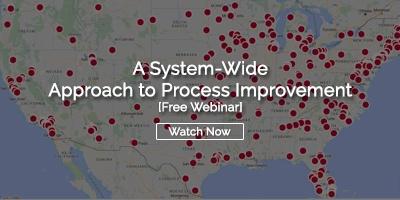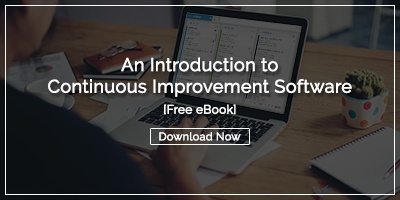 Business process improvement entails a systematic and intentional endeavor to identify, scrutinize, and refine the distinct stages, techniques, and interactions intrinsic to a business process. Its fundamental objective is eradicating inefficiencies, eliminating errors, amplifying productivity, and ultimately elevating an organization's overall performance and outcomes. This requires a comprehensive evaluation of existing processes to pinpoint bottlenecks, redundancies, and areas ripe for enhancement. Once these areas are defined, organizations devise and implement strategies, project management methodologies, and changes intended to streamline operations, heighten quality, and optimize the utilization of resources.
Business process improvement entails a systematic and intentional endeavor to identify, scrutinize, and refine the distinct stages, techniques, and interactions intrinsic to a business process. Its fundamental objective is eradicating inefficiencies, eliminating errors, amplifying productivity, and ultimately elevating an organization's overall performance and outcomes. This requires a comprehensive evaluation of existing processes to pinpoint bottlenecks, redundancies, and areas ripe for enhancement. Once these areas are defined, organizations devise and implement strategies, project management methodologies, and changes intended to streamline operations, heighten quality, and optimize the utilization of resources.
Far from a singular undertaking, continuous improvement embodies an ongoing commitment to adapt and progress in reaction to shifting market dynamics, customer requirements, and technological progress. It is a pivotal cornerstone of the continuous improvement philosophy, instilling an unceasing pursuit of excellence across all operational facets within organizations.
What is process improvement?
The distinction between continuous and one-time improvement projects lies in their scope, approach, and longevity. Continuous improvement is an ingrained philosophy emphasizing incremental enhancements to processes, products, and services over time. It involves a culture of consistently seeking out opportunities for refinement and optimizing existing workflows. Continuous improvement is a fundamental, long-term commitment to achieve sustained excellence and adapt to evolving conditions.
On the other hand, one-time improvement projects are discrete initiatives with a specific goal in mind. These projects are typically executed to address a particular issue, capitalize on an opportunity, or bring about significant change within a defined timeframe. They involve dedicated resources, planning, and execution to achieve a specific outcome. Once the project's objectives are met, it concludes, and its impact is assessed.
The primary goals of process improvement are to enhance efficiency, quality, and overall organizational performance. By systematically analyzing and optimizing existing workflows, the aims of process improvement include:
Eliminating Inefficiencies: Process improvement targets inefficiencies and waste within workflows, aiming to streamline operations and reduce unnecessary steps. This leads to smoother processes and improved resource utilization.
Reducing Errors and Defects: By identifying the root causes of errors, business process improvement helps minimize defects, errors, and rework. Fewer errors mean higher-quality products or services and enhanced customer satisfaction.
Increasing Productivity: Improving processes often leads to faster execution and reduced cycle times, increasing overall productivity. Higher productivity can result in greater output with the same or fewer resources.
Enhancing Customer Satisfaction: Better processes often translate to improved customer experiences. Timely delivery, consistent quality, and accurate responses to customer needs contribute to higher levels of customer satisfaction.
Optimizing Resource Utilization: Process improvement ensures that resources like time, labor, materials, and technology are utilized optimally. Optimal resource utilization can lead to cost savings and efficient allocation of resources.
Adapting to Change: Organizations must adapt to changing market conditions, customer demands, and technological advancements. Improving business processes fosters an agile environment, enabling organizations to respond effectively to changes.
Promoting Innovation: By encouraging the identification of improvement opportunities, process improvement can spark innovative ideas and solutions. Teams are empowered to find creative ways to enhance processes and outcomes.
Cultivating a Culture of Excellence: Embracing process improvement creates a culture where continuous enhancement is valued. This mindset fosters collaboration, problem-solving, and a commitment to delivering the best possible results.
Meeting Strategic Goals: Process improvement aligns with an organization's strategic goals, supporting its long-term vision. Improved processes can facilitate growth, market expansion, and the achievement of business objectives.
Process improvement best practices
Business process improvement encompasses a range of practices that can significantly enhance operational efficiency and effectiveness. Here are some best practices to consider:
Relentless communication and transparency
Define clear and specific objectives for your process improvement initiatives. Having well-defined and broadly shared goals across the entire organization helps guide efforts and measure success. Employees should feel sufficiently informed about the purpose, progress, and impact of process improvement activities.
Capturing ideas from employees for improvement projects
Front-line employees are in the perfect position to identify and execute opportunities for improvement. They should have an easy way to submit ideas and receive feedback. Ideally, employees should have access to an improvement platform available on any device at any time. Building a culture that encourages and rewards continuous improvement efforts is the cornerstone of success.
Managing employee ideas
Collecting employee ideas for improvement, but failing to act on them, harms morale and innovation. Employees should receive a timely response to each submitted opportunity for improvement, even if it isn't selected for implementation. Better yet, aim to implement something 90% of the time, even if the improvement doesn't perfectly solve the problem.
Foster psychological safety
When employees fear being punished for speaking up to point out problems or suggest opportunities for improvement, they will protect themselves by keeping quiet. Instead of telling employees to be courageous in the face of such risk, it's necessary for leaders to act in ways that cultivate a feeling of psychological safety. This includes leaders saying things like, "I could be wrong, so let's test my idea" and "We tried something and it didn't work, so let's learn from it." Leaders must model these behaviors and then reward employees when they follow their lead.
Regularly scheduled reviews of projects
Continuous improvement requires regular attention and effort. Frequent reviews of active projects help ensure forward momentum. Some organizations use daily huddle meetings to discuss improvement activities. Remember to consider the value of learning from past improvement attempts, both successful and unsuccessful, to refine future initiatives.
Tracking improvement projects
Project management software is an excellent way to track improvement projects, collect new ideas, and ensure that everyone is up to speed on the status of each active project. Digital Kanban boards make it easy to visualize projects moving from the imagination to the implementation phase.
Creating and adhering to a continuous improvement process or plan
Finding solutions and Implementing process changes often requires changes in behavior and attitudes. Implement effective change management strategies to ensure successful adoption by employees. Structured improvement methods such as PDSA (Plan, Do, Study, Adjust) or DMAIC (Define, Measure, Analyze, Improve, Control) help team members feel more confident in their approach to improvement.
Train new employees
Provide training and skill development to new employees to equip them with the knowledge and tools to implement process improvements effectively. It is also a best practice to have regular sessions to refresh and refine the skills of existing employees.
Align projects with appropriate stakeholders
Involve all relevant stakeholders, including employees, managers, and customers, in the process improvement process. Their insights and feedback are valuable for identifying issues, aligning projects to relevant goals, and crafting solutions.
Promote collaboration among different departments and teams. Cross-functional input ensures that process improvements consider the entire value chain and prevent suboptimal solutions.
Analyze current process
Thoroughly document existing processes before making changes. A complete review of the target process provides a baseline for comparison and helps in understanding where improvements can be made. Value stream mapping and fishbone diagrams are useful tools for visual process mapping.
Identify areas of improvement and create benchmarks
Establish key performance indicators (KPIs) to measure the impact of process improvements over time. Regularly monitor these metrics to ensure sustained benefits. In addition to financial metrics like revenue and cost, it is essential to include other measures of business health, such as quality, safety, customer satisfaction, cycle time, increased productivity, and employee engagement. These factors, taken together, serve to increase profitability.
/Reports/User%20Engagement%20Summary/User%20Engagement%20Summary%20Example.jpeg?width=394&height=300&name=User%20Engagement%20Summary%20Example.jpeg)
Consider various ways to implement projects
Before implementing large-scale changes, conduct pilot tests or simulations to identify potential challenges and refine solutions based on real-world feedback. In some cases, it will improve productivity to test various methods of implementing improvement to see which is most appropriate for the current situation.
Conclusion
Organizations are driven to engage in process improvement by a compelling pursuit of heightened efficiency, quality, and competitiveness. The desire to eliminate inefficiencies, reduce errors, and enhance overall performance fuels their motivation, as does the aspiration to deliver superior products or services to customers. Aiming for operational excellence and adaptability in a dynamic market, organizations improve processes to optimize resource utilization, foster innovation, and align their workflows with strategic objectives. This commitment to continuous enhancement reflects a dedication to customer satisfaction, growth, and sustained success, propelling organizations to proactively refine their operations and remain at the forefront of their industries.
Utilize Technology and Automation
Technology solutions can significantly aid process improvement efforts, enhancing efficiency, accuracy, and decision-making.
Business Process Management (BPM) Software: BPM software enables organizations to model, automate, and optimize their processes. It visually represents workflows, identifies bottlenecks, and offers tools to streamline operations. BPM software facilitates team collaboration and ensures that processes align with business objectives.
Workflow Automation Tools: Workflow automation tools automate routine tasks and approvals, reducing manual intervention and the risk of errors. They enhance efficiency by ensuring that processes are executed consistently and on time, freeing employees for more value-added tasks.
Data Analytics Platforms: Data analytics tools allow organizations to gather, analyze, and interpret data from various sources. This data-driven approach provides insights into process performance, identifying trends, outliers, and areas for improvement. Analytics tools enable evidence-based decision-making by presenting actionable information.
By basing decisions on data, organizations can make informed choices that lead to enhanced efficiency, reduced risks, and optimized outcomes. Data analytics transforms raw information into actionable intelligence, driving successful process improvement initiatives and contributing to overall organizational growth and success.
Collaboration and Communication Tools: Efficient communication and collaboration are essential for effective process improvement. Tools like project management software, virtual collaboration platforms, and video conferencing tools facilitate teamwork, knowledge sharing, and progress tracking.
Unlock the power of business process improvement with KaiNexus. Take the first step towards revolutionizing your organization's processes and driving sustainable growth. Our platform empowers you to streamline workflows, harness data-driven insights, and foster a culture of excellence. Ready to transform challenges into opportunities? Contact us today to embark on a journey of innovation, collaboration, and success with KaiNexus by your side.




Add a Comment